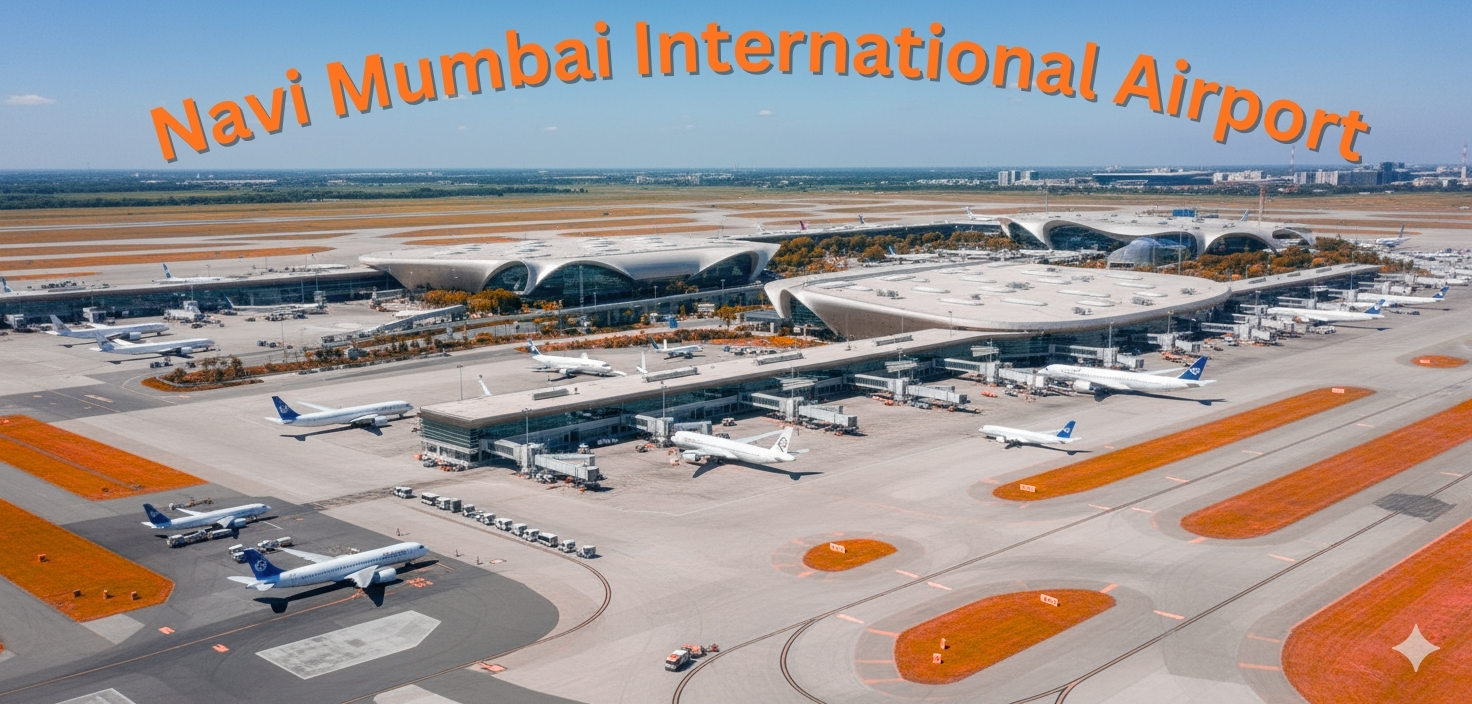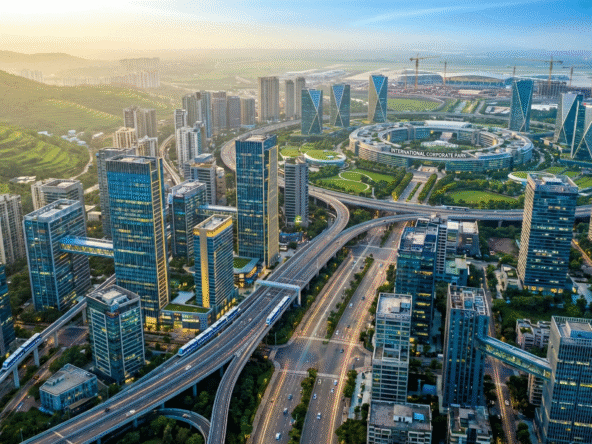India’s aviation sector is witnessing massive growth, and one of the most ambitious projects contributing to this expansion is the Navi Mumbai International Airport (NMIA). Positioned as a world-class greenfield airport, NMIA will not only ease congestion at the existing Chhatrapati Shivaji Maharaj International Airport (CSMIA) in Mumbai but also transform Navi Mumbai into a global aviation and business hub.
With cutting-edge design, sustainable infrastructure, and state-of-the-art connectivity, NMIA is set to become one of the largest and most advanced airports in Asia. Let’s dive deeper into its details, progress, connectivity, and future impact.
Why Navi Mumbai Needs a Second Airport
Mumbai, India’s financial capital, is one of the busiest cities in the world in terms of air traffic. The Chhatrapati Shivaji Maharaj International Airport (CSMIA) currently handles more than 45 million passengers annually, despite its designed capacity being much lower.

The rising demand for domestic and international travel, coupled with Mumbai’s growing economic importance, created an urgent need for a second international airport. Navi Mumbai, with its strategic location and ample land availability, was chosen as the ideal site for this mega project.
Key Highlights of NMIA
- Location: Ulwe, Navi Mumbai (near Panvel)
- Developer: Adani Airport Holdings Limited (AAHL) in collaboration with CIDCO
- Total Area: ~1,160 hectares (making it one of the largest greenfield airport projects in Asia)
- Estimated Cost: ₹16,000+ crore
- Passenger Capacity:
- Phase 1: 20 million passengers annually
- Full Capacity: 90 million passengers annually (by 2032)
- Runways: 2 parallel runways for simultaneous take-offs and landings
- Terminal Design: Inspired by the lotus flower – modern, sustainable, and eco-friendly architecture
Construction Progress (2025 Update)
The project, which faced several delays in the past due to land acquisition and environmental clearances, is now progressing at full pace.
- Phase 1 construction is nearing completion and is expected to be operational by late 2025 or early 2026.
- Once completed, NMIA will rank among the top airports in Asia in terms of size and capacity.
- The project involves world-class engineering, including advanced runway design, aerobridges, green energy use, and automated systems for passenger and cargo handling.
Strategic Connectivity
One of NMIA’s biggest advantages is its seamless connectivity with different parts of Mumbai and Maharashtra.
🚇 Metro Connectivity
- The Navi Mumbai Metro Line-2 will connect directly to the airport, making travel convenient for commuters across the city.
🛣 Roadways
- Connected through the Mumbai–Pune Expressway, Sion-Panvel Highway, and Samruddhi Mahamarg, ensuring smooth access from major urban centers.
🚆 Rail Network
- Suburban trains from Panvel, Belapur, and Nerul will provide quick access to the airport, making it easier for daily travelers.
🌉 Mumbai Trans Harbour Link (MTHL)
- A game-changing 22 km sea bridge, the MTHL will directly connect South Mumbai to Navi Mumbai, cutting travel time to just 20 minutes.
With such extensive connectivity, NMIA will become one of the best-connected airports in India.
Economic Impact of NMIA
The Navi Mumbai International Airport will be more than just an aviation facility – it will serve as an economic growth engine.
- Employment Opportunities
- Thousands of jobs in construction, aviation, hospitality, logistics, and retail.
- Boost to Real Estate
- Panvel, Ulwe, and other parts of Navi Mumbai are already witnessing a real estate boom. Property values are expected to rise sharply once the airport becomes operational.
- Tourism & Hospitality Growth
- More hotels, restaurants, shopping malls, and tourism-related infrastructure will be developed to cater to the rising passenger flow.
- Trade & Logistics Hub
- NMIA will enhance cargo handling and logistics, making Navi Mumbai a preferred hub for businesses across Western India.
Why NMIA is a Game-Changer for India
- Reduces Burden on CSMIA – Handling Mumbai’s ever-increasing air traffic.
- Eco-Friendly Infrastructure – Built with sustainable and energy-efficient technologies.
- Global Connectivity – Strengthens India’s position in international aviation.
- Economic Boost – Driving growth in real estate, tourism, trade, and services.
- Urban Transformation – Turning Navi Mumbai into a modern business and lifestyle destination.
FAQs About Navi Mumbai International Airport
1. When will the Navi Mumbai International Airport open?
Phase 1 is expected to be operational by late 2025 or early 2026.
2. What is the passenger capacity of NMIA?
Phase 1 will handle 20 million passengers annually, with full capacity reaching 90 million by 2032.
3. Who is developing the airport?
Adani Airport Holdings Limited (AAHL) in collaboration with CIDCO.
4. How will NMIA impact Navi Mumbai real estate?
Property prices in Panvel, Ulwe, and surrounding areas are expected to rise significantly due to improved connectivity and demand.
5. Will NMIA have metro connectivity?
Yes, Navi Mumbai Metro Line-2 will directly connect the airport with city areas.
6. How many runways will NMIA have?
Two parallel runways for simultaneous take-offs and landings.
7. What is unique about the airport’s design?
The terminal is inspired by the lotus flower, with a focus on sustainability and eco-friendly architecture.
8. How much is the estimated cost of the project?
The project is estimated to cost over ₹16,000 crore.
9. Will NMIA be one of the biggest airports in India?
Yes, upon completion, it will be among the largest airports in Asia with a capacity of 90 million passengers annually.
10. What will be the impact on Mumbai’s economy?
It will create jobs, attract global investments, boost trade, and strengthen Mumbai’s status as a global financial hub.
Final Takeaway
The Navi Mumbai International Airport is not just a new infrastructure project – it is a symbol of India’s modern development and aviation strength. With its world-class design, unmatched connectivity, and huge economic benefits, NMIA will transform Navi Mumbai into a global aviation hub.
By 2032, when the airport reaches its full potential, it will redefine how India connects with the world – making Mumbai and Navi Mumbai the true gateways to global trade, business, and travel.





